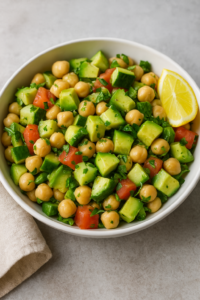
If you don't have hypoglycemia or diabetes or if you rarely indulge in sugar, your pancreas can handle occasional sugary treats. But if you frequently eat sugar, your pancreas can become hypersensitive to sugar and overreact, flooding your body with insulin, which causes blood-sugar levels to plummet. This triggers your adrenal glands into action, and they notify your liver to release the glucose that it has stored as emergency fuel, which once again floods your bloodstream with sugar. If this happens too many times, your pancreas can finally give up and stop producing insulin or your cells may become resistant to insulin, and hypoglycemia can slip into diabetes.
Good Energy Food for Diabetics
10 Simple Food Concepts Every Person Living With Diabetes Should Know
Making Cheesecake For Diabetics
Enjoy the Taste and Benefits of Diabetic Foods
Will The Mulberry Leaf Help Your Diabetes?
5 DIABETIC FRIENDLY SALADS Some Tasty
DIABETIC LEMON COCONUT COOKIES Some Tasty
50 Healthy Diabetic Recipes That Are The Best
Most American women eat about 80 pounds of sugar per year, as well as large amounts of refined carbohydrates such as white flour, which is easily converted into glucose in the body. Even if you don't add sugar to foods, you can still take in tremendous amounts if your diet contains a lot of prepared foods. Obviously, desserts and sweets are loaded with sugar, but other foods such as salad dressings, pasta sauces, and dry cereals also typically contain large amounts of sugar. Sugar is hidden in foods in many forms and is often used in more than one form in processed foods. To help restore healthy blood-sugar levels, avoid all forms of sugar, including sucrose, glucose, maltose, corn syrup, honey, maple syrup, barley malt, and molasses. Learn to enjoy the unprocessed sweetness of fresh fruits (in moderation) and sweet vegetables such as yams, carrots, and winter squash. Although giving up concentrated sweeteners may be difficult initially, you will find that your cravings for sugar will diminish within a few weeks.
Other foods that interfere with healthy blood-sugar levels include refined carbohydrates such as breads and pastas made from white flour and white rice, all of which are rapidly broken down into simple sugars in the body. Stimulants such as caffeine offer a temporary burst of energy, but stress the adrenal glands and further impair their ability to normalize blood-sugar levels. Alcohol also interferes with blood-sugar stability because it hinders the body's ability to use glucose and stimulates the release of insulin, which causes blood sugar take a nosedive.
To help maintain steady blood-sugar levels, eat a diet high in fiber, especially soluble fiber, which slows down the digestion and absorption of carbohydrates and prevents rapid increases in blood sugar levels. Soluble fiber keeps the pancreas from secreting too much insulin by enhancing cell sensitivity to insulin and improves the use of glucose by the liver, which prevents blood-sugar levels from remaining too high. Strive for at least 35 grams and preferably 50 grams of fiber each day. Legumes, whole grains, nuts, seeds, vegetables, and fruits are good sources of fiber, and especially good sources of soluble fiber include legumes, oat bran, most vegetables, apples, and pears. Eat carbohydrates in as close to their natural state as possible, because the fiber content helps to slow the absorption of natural sugars that carbohydrates contain-for example, eat an apple instead of drinking apple juice. Psyllium-seed husks, guar gum, and pectin are excellent sources of supplemental soluble fiber. To help balance blood-sugar levels, take one to three teaspoons of a fiber supplement stirred into a glass of water twice daily before meals.
Protein is essential for the proper functioning of the adrenal glands, pancreas, and liver and prevents cravings for high-carbohydrate foods. Because protein does not stimulate the release of insulin as do carbohydrates, it helps to stabilize blood-sugar levels. For maximum blood-sugar stability, eat three to four ounces of protein at lunch and at dinner. Moderate amounts of healthful fats are also essential for helping to maintain healthy blood-sugar levels and for providing a feeling of satiety, which helps to reduce cravings for carbohydrates. Raw nuts and seeds, avocados, olive oil, and flaxseed oil are all good sources of health-enhancing fats.
Eating frequent small meals is a helpful strategy for stabilizing blood-sugar levels. Avoid skipping meals, or going for more than two to three hours without eating. Get into the habit of eating meals at regular times, because your body functions best on a regular schedule. Plan for three meals a day, plus midmorning, midafternoon, and evening snacks. Include a small amount of protein or fat in your snack to help keep blood sugar stable-for example, have an apple with a few almonds, crackers with tofu spread, or carrot sticks with a few walnuts.
Check out these related articles, too:
What You Should Look Out For For Kidney Failure Symptoms?
Kidney Failure Treatment Without Dialysis
Kidney Diet Secrets That Can Reverse Chronic Kidney Failure
The Effects of High Potassium For Kidney
What Is A Healthy Kidney Diet Plan
Diet Tips For People With Diabetes and Kidney Disease
Are Renal Insufficiency And Kidney Failure The Same Thing
5 Natural Supplements For Chronic Kidney Disease
Bitter Melon Recipe For Diabetes
Supplements that are especially helpful for balancing blood sugar include chromium, a trace mineral that is essential for the proper functioning of insulin. Take 200 to 600 micrograms of chromium picolinate daily. To help strengthen the adrenal glands, take 2,000 milligrams of vitamin C daily in divided doses and a high potency multivitamin and mineral that provides 50 to 100 milligrams of the B-complex vitamins.
Source: Free Guest Posting Articles from ArticlesFactory.com



 Protected by Patchstack
Protected by Patchstack